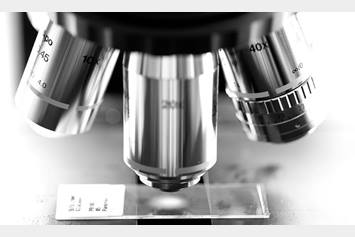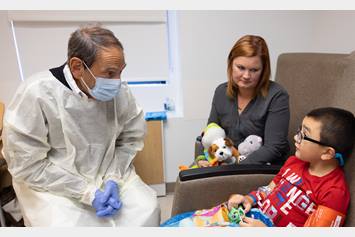Duchenne Muscular Dystrophy
Duchenne muscular dystrophy is a rare condition defined by worsening muscle weakness and damage.
What Is Duchenne Muscular Dystrophy?
Duchenne muscular dystrophy is the most common inherited neuromuscular disorder that affects all races and ethnicities. Affecting only males, it occurs in 1/3,600 live-born infant boys. While some affected newborns may have some mild hypotonia (decreased muscle tone or “floppiness”), other symptoms are rarely present at birth or in early infancy. Early gross motor developmental milestones, including rolling over, sitting, and standing, are usually met at the normal ages, or slightly later than normal.
Those affected usually maintain the ability to be able to use their hands to hold and use eating and writing utensils. All children with DMD will have some degree of intellectual impairment, with most having only learning disabilities.
What Are the Signs and Symptoms?
The first sign of muscle weakness is often poor head control. Many children begin walking at the appropriate age, around 12 months. However, weakness of hip muscles may start as early as the 2nd year of life, causing affected toddlers to stand with their lower back arched forward. Between three and five years of age, affected children become unable to stand up from squatting position without pushing through their arms (Gower’s sign), and begin to walk with a waddle (Trendelenburg gait). Children may lose the ability to walk as early as 7 years of age. Most will become confined to a wheelchair by the age of 10-12 years.
Characteristic Features of Duchenne Muscular Dystrophy
- Enlarged calf muscles
- Shrinking of thigh muscles
- Progressive (worsening) muscle weakness
- Intellectual impairment
What To Expect
Muscle weakness and breakdown continues to progress throughout life, causing development of many complicating disorders and the common signs and symptoms of the disease. Calf muscles commonly become enlarged (psuedohypertrophy), and thigh muscles become thin. The tongue and forearm muscles may also become enlarged. Stiffening of the joints (contractures) may occur. Many children will develop severe spinal curvature (scoliosis), particularly after becoming confined to a wheelchair. Weakness in chest and throat muscles leads to difficulty coughing and swallowing, causing frequent lung infections. Breakdown of the heart muscle (cardiomyopathy) is typical. With a life expectancy of about 18 years of age, heart and respiratory complications are most commonly the cause of death in patients with DMD.



